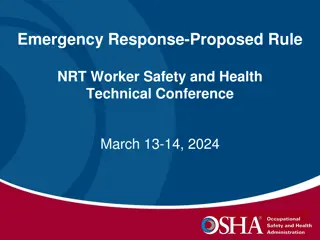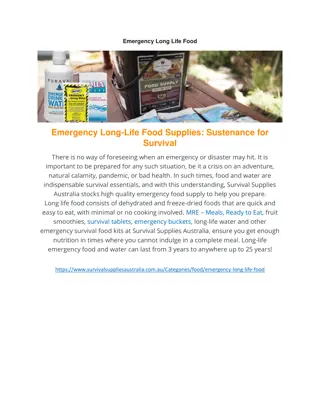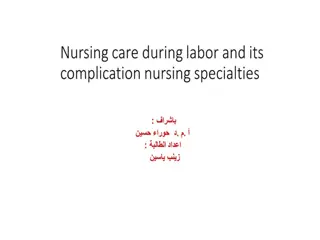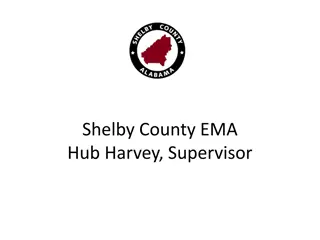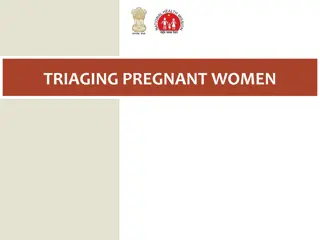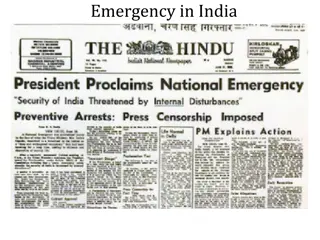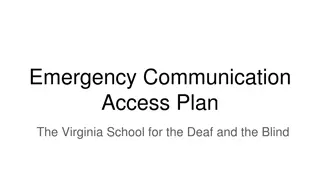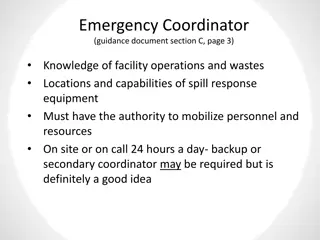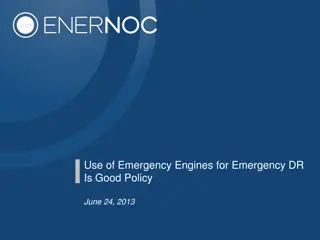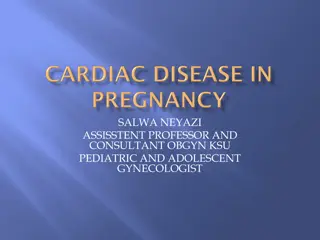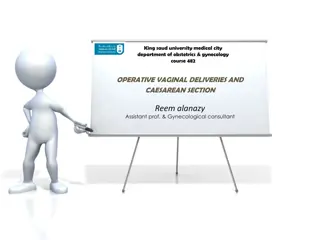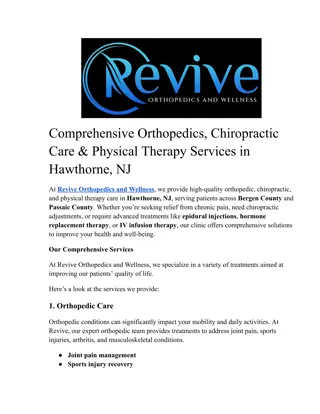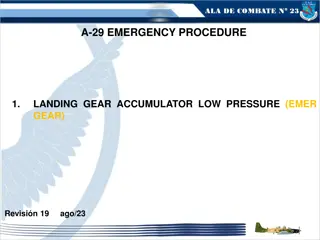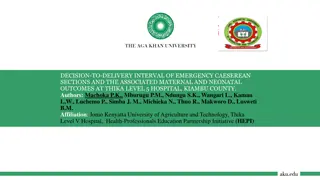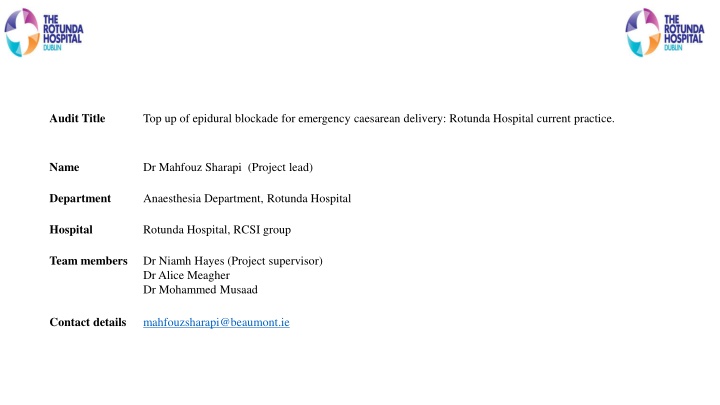
Audit on Epidural Top-Up for Emergency Caesarean Delivery at Rotunda Hospital
Conducted at Rotunda Hospital in Dublin, this audit reviews the current practice of extending labour analgesia to surgical anaesthesia for emergency caesarean sections, aiming to standardize epidural top-up practices and reduce conversions to general anaesthesia.
Download Presentation

Please find below an Image/Link to download the presentation.
The content on the website is provided AS IS for your information and personal use only. It may not be sold, licensed, or shared on other websites without obtaining consent from the author. If you encounter any issues during the download, it is possible that the publisher has removed the file from their server.
You are allowed to download the files provided on this website for personal or commercial use, subject to the condition that they are used lawfully. All files are the property of their respective owners.
The content on the website is provided AS IS for your information and personal use only. It may not be sold, licensed, or shared on other websites without obtaining consent from the author.
E N D
Presentation Transcript
Audit Title Top up of epidural blockade for emergency caesarean delivery: Rotunda Hospital current practice. Name Dr Mahfouz Sharapi (Project lead) Department Anaesthesia Department, Rotunda Hospital Hospital Rotunda Hospital, RCSI group Team members Dr Niamh Hayes (Project supervisor) Dr Alice Meagher Dr Mohammed Musaad Contact details mahfouzsharapi@beaumont.ie
Background 37%. There was 3,034 CD in all, 1,476 of which (49%) were emergencies. The commonest anaesthetic technique for surgical anaesthesia for CD is epidural, usually achieved by topping up a labour epidural, accounting for 50 % of emergency CD, table (1). (2) The department guidance for top-up recommends three different drugs depending on context: Lidocaine 2% is fast-acting but relatively short-lived, Bupivacaine 0.5% is slower in onset but lasts longer than Lidocaine, and Levobupivacaine 0.5% has a better safety profile but is relatively less potent than Bupivacaine. In addition to variation in drug choice, there is variation in volume of drug administered to top up. Most epidural top-ups are successful, but some do need IV analgesic or conversion to general anaesthesia. RCOA recommendations regarding the same are shown in (table 2) (3,4) There is a recent report from the UK illustrates their practice of epidural top-up to achieve surgical anaesthesia for emergency CD. Levobupivacaine was the most commonly used agent in that report (36%), followed by Lidocaine with added bicarbonate and/or epinephrine (36%), then Bupivacaine-Lidocaine mixtures (12%), and Bupivacaine alone 11%. Using adjuncts such as bicarbonate and epinephrine carries a risk of drug error because they have to be premixed and added to the basic local anaesthetic solutions. Concerns about variation in practice for one of the most common obstetric procedures were highlighted in the report and recommendations made to reduce practice variation in the interests of safety. (5) There is an increased overall global trend in caesarean deliveries (CD) since 1990 (7%) and 2000 (12 %). (1) In 2020, the caesarean delivery (CD) rate in the Rotunda was Aim We want to review current practice in the Rotunda in the context of the UK report (audit standard), to examine whether there is a specific local anaesthetic combination that provides reliable surgical anaesthesia and is associated with a lower incidence of conversion to GA, and to review any complications related to epidural top-up for CD. The main objective of this audit is to assess the current practice among anaesthetists in Rotunda Hospital when extending labour analgesia to surgical anaesthesia for CD. Change initiative Standardization of the practice of epidural top-up to provide surgical anaesthesia for emergency CD among anaesthetists in Rotunda Hospital.
Top up of epidural blockade for emergency caesarean delivery: Rotunda Hospital current practice. Dr Mahfouz Sharapi (Audit Lead), Dr Alice Meagher, Dr Mohammed Musaad Dr Niamh Hayes (Audit supervisor) Anaesthesia Department, Rotunda Hospital METHODS This is a retrospective audit conducted in a tertiary centre of obstetric in Dublin in Ireland, Rotunda Hospital. Data were retrieved from electronic medical records. Data were collected in October 2021. Inclusion criteria:- Emergency CAT 1 or 2 or 3 caesarean sections under epidural top-up to extend labour analgesia to anaesthesia for caesarean delivery. The sample size is 200 The following data were collected, Category of CS, local anaesthetic agent used, and how much mls used, Epidural fentanyl complications, Analgesia used intraoperatively like IV fentanyl or Entonox, Conversion to GA and Timing of the procedure (in hours or on call) RESULTS 94% of patients included had category CS compared to 6 % category CS Lidocaine 2%% is the most commonly used agent to top up the epidural for emergency CS, Bupivacaine levobupivacaine 0.5%, (representing 79%, 77% and 10 % respectively) either as a single agent or in combination with a second agent. There is a trend in Rotunda hospital to use two agents instead of one. Lidocaine-Bupivacaine was the most used in patients, 123 (61.5%) followed Levobupivacaine mixture, 8(4%), table (3). The least agent used either a single agent or in levobupivacaine. The minimum and maximum volumes of lidocaine and bupivacaine were similar (2 and 20 ml respectively). IQR for Lidocaine 10m and (5-10 ml) for Bupivacaine. levobupivacaine minimum volume used was 2.5 ml, maximum 17 and IQR (8- 10 ml), figure (1). RESULTS We reported no complications related to the epidural top-up. It was not clear where the top-up was made, in delivery suite or operating theatre and whether the patients were monitored or not during transfer to theatre. 16 patients (8%) out of 200 had intraoperative supplemental analgesia, and IV fentanyl was the commonest analgesic agent used. IV pethidine was given in 2 occasions, but was unclear was for shivering or pain. Only 12(6%) patients were converted to GA due to inadequate anaesthesia.. 17% of CAT sections were converted to GA, meanwhile, 6% of CAT sections were converted, figure (2). The Royal College of Anaesthetists states that the conversion rate from neuraxial blockade to general anaesthesia should be less than 15% and 5%, respectively, for CAT and CAT - overall. (3,6) In this particular sample, the international standards have not been met. (5) These results are not in line with the UK results found in the survey that was confirming the increased use of levobupivacaine in 36 % of cases, in comparison to only 10 % of cases in our audit. (6) conducted followed 0.5% by and combination by Lidocaine- use, Supplemental Any a mixture was Meanwhile,
Top up of epidural blockade for emergency caesarean delivery: Rotunda Hospital current practice. Dr Mahfouz Sharapi (Audit Lead), Dr Alice Meagher, Dr Mohammed Musaad Dr Niamh Hayes (Audit supervisor) Anaesthesia Department, Rotunda Hospital Sustained- how was the improvement sustained (Action Plan) CONCLUSIONS Patients with labour epidural represent half of emergency CS. Management of these patients can be challenging as there is no high- level evidence to support one local anaesthetic agent over the other. In an area with a high volume of activity like obstetric theatre and labour ward standardization should be our target to minimise the chances of errors. The lidocaine-bupivacaine solution combination is the most common agent used in Rotunda hospital, although the rate of conversion to GA in this particular sample is outside suggested international standards for emergency CD. Set-up a protocol for epidural top-up for emergency CD. Patient monitoring during transfer from DS to theatre post-top up or presence of anaesthetist during transfer. Document the indication of Pethidine IV in the anaesthesia chart (pain or shivering) Document the location of giving drugs in the anaesthesia chart,(DS, theatre, during transfer) Enhanced learning at the beginning of rotation re choice of top up and volume of drug to emphasise consistency in approach. Six-monthly review of the guidance in the anaesthetic app to emphasise the consistency of practice and responsiveness to GA conversion rate REFERENCES 1. Wise J. Alarming global rise in caesarean births, figures show. BMJ [Internet]. 2018;363. Available from:https://www.bmj.com/content/363/bmj.k4319 2. The Rotunda Hospital Dublin Annual Report. 2020;67 71. Available from: https://rotunda.ie/rotunda-pdfs/Clinical Reports/Rotunda Hospital Annual Report 2020.pdf 3. Plaat F. OAA / AAGBI Guidelines from:http://www.oaawebcast.info/oaa/Refresher_2_oct_2013_files/1630 Plaat.pdf 4. Rafi MA, Arfeen Z, Misra U. Conversion of regional to general anaesthesia at caesarean section: increasing the use of regional anaesthesia through continuous prospective audit. Int J Obstet Anesth. 2010 Apr;19(2):179 82. 5. RCo A. Raising the standard: a compendium of audit recipes. In: Obstetric services. 2006. p. 174 5. 6. Richardson AL, Bhuptani S, Lucas DN. The extension of epidural blockade for emergency caesarean delivery: a survey of UK practice. Int J Obstet Anesth [Internet]. 2021;46:102977. https://doi.org/10.1016/j.ijoa.2021.102977 Value to patients Standardization of the clinical practice among different anaesthetists in an area of high volume activity like labour ward will lead to dramatic improvement in patient safety. -an update. :20. Available Spread Enhanced learning among anaesthetists at the beginning of rotation (every six months) regarding choice of top up and volume of drug to emphasise consistency in approach for epidural top-up. Dissemination of the results of the initiative among other stakeholders Available from:


